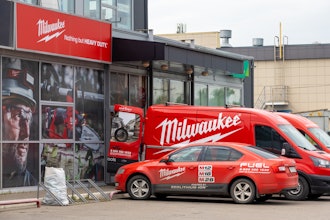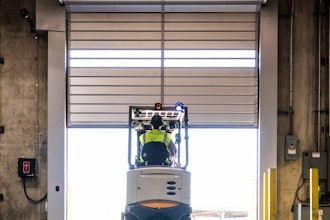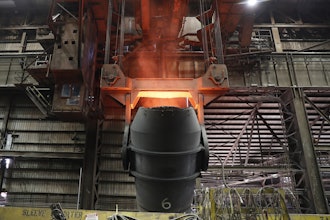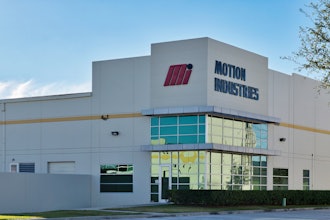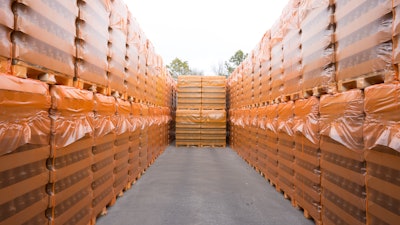
Editor's note: This is sponsored content.
In order to succeed in the consumer packaged goods (CPG) business, companies must operate within a confusing web of logistics, distribution channels, and changing customer expectations. However, the industry has grown exponentially more complex over the last several years. Supply chains within the CPG sector are being stretched to their limits due to evolving consumer behaviors, e-commerce growth, and global disruptions. In the case of food products, the stakes are even higher. Turnarounds need to be faster to effectively distribute perishable goods. Likewise, forecasts must be accurate to fully optimize available distribution networks.
To be competitive, CPG companies need to pay close attention to efficiency in distribution. This article will take a closer look at how supply chains can be streamlined, especially in manufacturing and distributing food products.
Data-Driven Forecasting in Demand and Supply
High-performing companies rely on accurate, data-driven forecasting to move products along their supply chains. But for food product companies, it's not just a factor of how much product to manufacture. It is also about getting the product to the right place at the right time. Advances in AI and ML are proving to be game-changers in this regard.
Companies are experimenting with Digital Twins or virtual replicas of their physical supply chains. These models are ideal for stress-testing various scenarios and logistics optimization prior to deployment in the real world. Running simulations using Digital Twins provides CPG companies with key insights into their production schedule, inventory management, and transportation strategies. All of which are integral parts of efficient distribution.
Systems like Kraft Heinz's AI 'Lighthouse' have already shown how real-time data analytics can improve demand forecasting. The program forecasts in granular detail what consumers are buying, how the market is shifting, and the seasonality of trend cycles. Guided by these insights, CPG companies can foresee demand fluctuations and reduce overproduction and waste. The last point is crucial for maintaining margins for easily perishable food products. AI advances are also used in databases such as Keychain.com, which helps vendors, brands, manufacturers, and retailers find each other. These technologies underpin the modern, efficient distribution system that simultaneously preserves product freshness while reducing operational costs.
Leverage and Multi-Channel Distribution
CPG food products are expanding beyond the traditional grocery store model. Consumers are now looking for food and personal care items through e-commerce, direct-to-consumer (DTC) channels, and omnichannel mediums. Companies must adopt a multi-channel distribution approach in order to meet varied consumer needs and preferences.
The rise in e-commerce has turned online marketplaces like Amazon and Instacart into key distribution channels for food. Of course, this change brings a new set of logistical challenges. Online grocery orders need faster lead times and more agile last-mile delivery options than traditional in-store purchases. Companies turn to micro-fulfillment centers, which are smaller hubs set up closer to the end customer. This strategy cuts down delivery times and expenses. Retailers and producers can also better manage their inventory and respond to demand with far more dexterity.
DTC models provide a way for CPG companies to bypass traditional retail intermediaries and forge more direct relationships with consumers by streamlining distribution. Food brands are experimenting with subscription services, which offer added convenience and better forecasting of recurring demand.
As companies continue to expand their direct-to-consumer operations, they must invest in flexible transportation networks and adaptable warehousing solutions to manage fluctuating volumes without compromising speed or quality.
Cold Chain Optimization for Perishable Goods
One major complication in food distribution is maintaining the product integrity of perishable items such as dairy products, meat, and fresh produce. Variability in temperature during storage or in transit can cause spoilage or loss. Companies can suffer from hits to their bottom line and their reputation.
Optimizing the cold chain of transportation of perishable commodities can result in increased distribution efficiency. Pulling this off successfully requires close coordination among the manufacturers, logistics providers, and retailers, who must all ensure that temperature control is properly maintained at all points in the supply chain. Reputable food certifications can quickly signal to retailers that manufacturers follow the most stringent distribution processes.
Among emerging best practices is the use of sensors across the entire cold chain. Internet-enabled machinery and storage solutions provide real-time tracking of product temperature, location, and even humidity to ensure instant problem-solving. For instance, in case of a breakdown of a refrigerated truck, sensors can trigger an alert to logistics teams either to reroute that vehicle or adjust the storage conditions to keep prevent spoiling. Data can also be aggregated by cloud-based platforms to provide top-level visibility of cold chain performance, highlight bottlenecks, and expand opportunities for development. Selecting third-party manufacturers and logistics providers specializing in perishable goods is critical in ensuring that products arrive at destination points in optimal condition.
Conclusion
CPG distribution efficiency is best delivered through a multilayered strategy. This includes the use of advanced technologies, like AI, leveraging multi-channel distribution, and optimizing cold-chain distribution. For food product companies, an efficient and strong supply chain is more than a reason for competitive advantage; it is a matter of survival.













